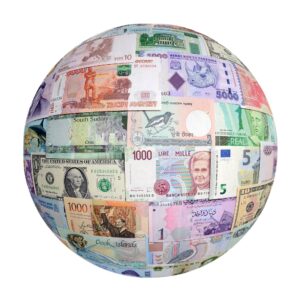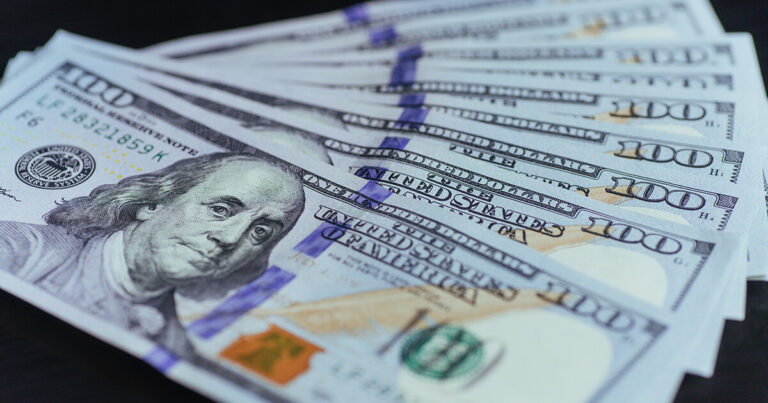The second wave of coronavirus pandemic themes dominated currency trading news at the end of the week.
World economies gradually reopening after shutdown also featured prominently in the news affecting currency trading.
The American dollar finally came back to life after sustaining three weeks of weakness, as investors embarked on risk aversion measures.
Forex News Events

COVID 19 global pandemic
Looking at COVID 19 statistics for the week ending on 14th reveals nearly 8 million confirmed cases.
The fatalities stand at almost half a million while recoveries slightly over 4 million.
The number of coronavirus infections continues to increase worldwide amid the easing of lockdown measures sparking fears of a resurgence.
According to Bloomberg.com, German council of economic experts chairman Lars Feld, says “the second wave of infections will not be avoidable.” But, the economy can dodge a hit if the country is prepared, and the goal is to avoid a lockdown during a second wave.”
New increased cases of coronavirus since the outbreak were reported in Florida.
More than 12 States of America, including Texas and California, have reported increased coronavirus cases on the reopening of economies.
The US government warned that it might re-implement strict coronavirus lockdown measures if covid 19 cases continue on the upward trend.
As more states reopen, there is a corresponding rise in covid 19 new cases. New Zealand is out of danger as it has zero active cases.
Oil Prices
Oil prices fell over 3% on Monday after OPEC nations agreed to extend output cuts.
Oil prices dropped after having risen steadily for the past six weeks.
The recent increase in oil prices had been fuelled by fear of missing out (FOMO) emotions rather than fundamental analysis.
Must Read: How to control the emotions in trading
Other Negative News in Forex
Negative news in forex that pushed higher-yielding currencies and oil prices down include:
- poor economic report from Europe
- Fear Of Missing Out (FOMO)
- Dwindling expectations on a faster recovery of the world economy
- Fear of second wave coronavirus pandemic and a possible lockdown.
- Geopolitical tensions
Currency Trading News Affects on the Global currencies

Table: Summary of Global currencies performance in the week.
| Currency pair | 8th June | 14th June | average | Percentage change | remarks |
| USD | 96.608 | 97.305 | 96.585 | 0.395 | gain |
| EUR/USD | 1 .1294 | 1.1243 | 1.1301 | 0.3854 | gain |
| GBP/USD | 1.2723 | 1.2519 | 1.2644 | 1.1528 | loss |
| USD/JPY | 108.43 | 107.55 | 107.51 | 1.86 | loss |
| USD/CAD | 1.3384 | 1.3585 | 1.3508 | 1.4673 | gain |
| AUD/USD | 0.7020 | 0.6836 | 0.6922 | 1,9085 | loss |
| USD/CHF | 0.9577 | 0,9521 | 0,9503 | 1.0908 | loss |
| USD/NZD | 1.5246 | 1.5574 | 1.5442 | 1.4024 | gain |
USD Strong Rebound
Forex investors sought this safe-haven currency towards the end of the week.
The sought after dollar attributed its rebound to negative global forex news events on the vanishing hopes for a faster economic recovery post covid 19 world pandemic.
Also, the US federal government increased economic stimulus to combat the coronavirus pandemic and suspended income taxes.
According to investing.com, the dollar started the week on a sour note. It lost steadily from Monday to the lowest of 95.950 on Wednesday.
However, it rebounded strongly on Thursday to close on a high of 97.305 emerging 0.395 % stronger at the close of the week.
Coronavirus resurgence and the possibility of another lockdown measures triggered risk aversion measures in favor of the USD.
On Thursday, safe-haven currencies – American dollar, yen, and Swiss franc strengthened as American stock market plunged and on dwindling prospects that the global economy would recover faster from the coronavirus pandemic.
Early in the week, the American dollar weakened on risk news in forex stemming from the European poor economic report and improved economies.
However, geopolitical tensions, the US positive economic outlook, slower global economic recovery, and coronavirus second wave threads supported the dollar.
GBP/USD
The cable started the week in a positive mood only to retreat from Thursday amid a shift in global risk currency trading news.
It opened the week at 1.2723 to close at 1.2519 on Sunday, having shed 1.1528%.
On Thursday, fears of coronavirus second-wave pandemics added more impetus to the currency trading news pushing the cable southwards.
The sterling pound also received undue pressure from other news in currency trading.
A bad economic outlook report as Britain’s GDP dropped by 20.4% worked against the stealing pound.
Earlier in the week, Brexit talks hit a snag as Britain refused to relent on its fishing rights.
In addition, the UK abandoned plans on full border checks on products from the EU to ease economic pressure on its businesses affected by covid 19.
EUR/USD
The euro gained steadily from Monday to Wednesday to reach a high of 1.1371.
However, it plunged steadily from Thursday through to Sunday to record a modest 0.3854% drop over the week.
Early in the week, the euro strengthened as investors reacted to negative currency trading news and reopened their member states’ economies.
Also, economic recovery stimulus packages European Union Council Bank provided support to this currency pair.
Things changed from Thursday, and the euro steadily returned its earlier gains.
Notably, investors abandoned the euro in favor of the dollar amid fears of the looming second wave coronavirus pandemic and another lockdown.
Also, most of its member states posted poor economic performance.
For example, in Germany, exports dropped by 31% in April, attributed to covid 19 pandemics.
USD/JPY Come Back from 4 days Straight Losses
According to investing.com, the yen gained steadily against the dollar from Monday to Thursday to hit a low of 106.57.
The dollar rebound on Friday and Sunday to record a loss of 1.86% in the week ending 14th.
The yen was supported by the improved economic performance of Japan.
Also, Europe posted poor economic data that rallied the yen.
According to currency trading news, the effect of the covid 19 pandemic affected major economies of japan.
Also, global tensions boosted the yen in the week.
North Korea terminated communication with South Korea in the final steps towards cutting off all relationships.
Continued efforts to persuade North Korea to end its nuclear weapons programs proved futile. North Korea threatened to close liaison offices and other projects with South Korea.
Mike Pompeo, US secretary of State, demanded that Iran release American detainees on Wednesday and urged Libya to a ceasefire.
On Friday, investors shifted towards the dollar in reaction to positive currency trading news.
Forex news events toward risk appetite also weighed heavily on the yen safe-haven, which is highly sensitive to risk appetite.
USD/CHF
The USD/CHF currency pair opened the week at 0.9577 to the lowest of 0.9442 on Thursday and recovered slightly on Friday.
The dollar shed 1.0908 at the end of the week according to the news in forex.
It is most likely that the Swiss franc gained strength due to global risk currency trading news and a weak dollar as there were no major forex news events from Switzerland.
USD/CAD Biggest Gainer of the Week
Over the week ending 14th, the Canadian dollar lost a significant 1.4673% against the American dollar to be the week’s biggest loser.
The Canadian dollar was badly hit by negative news in forex events, Europeans’ poor economic data, geopolitical tensions, and fear of missing out emotions.
Also diminishing hopes on quicker recoveries of world economies from covid 19 pandemics pushed the Canadian dollar down,
Also, the falling oil prices negatively affected this commodity-based currency to its lowest.
The fear of second wave resurgence of coronavirus pandemic and a possible repeat of lockdown measures sealed the fate of the Canadian dollar.
Earlier in the week, the loonie rallied against the greenback on continued improvement in consumer index for the 6th consecutive week.
AUD/USD
The Aussie clinched the top week’s loser position shedding nearly 2%.
It lost ground due to the weakening global outlook and second wave coronavirus fears in the Australian dollar gained on the reopening of trade hopefulness.
Also, increased business confidence boosted the Aussie a bit in the week.
The Australian dollar was significantly pulled down by poorer European economic data and geopolitical tensions.
Furthermore, dashed hopes on speedy recovery of world economies and fears of second wave coronavirus infections worked against the Aussie.
The possibility of re-implementation of lockdown measures got investors worried.
USD/NZD
The kiwi moved from a big winner the previous week to a loser in the second week of June.
Negative currency trading news and counter currency flow weighed on the New Zealand dollar heavily.
Other news in forex that pulled the kiwi down includes geopolitical tensions and poorer European economic outlook.
On the positive side, according to edition.cnn.com, New Zealand has no active covid 19 cases, and it plans to lift most of its coronavirus lockdown measures.
Conclusion 
The American dollar gained against the sterling pound, Canadian dollar, Australian dollar, and the New Zealand dollar.
However, it lost strength against the safe-haven currencies and the euro.
Over the week, there was a high demand for the safe-haven currency on risk aversion measures.
Forex traders also reacted strongly to the fears of the second wave of coronavirus pandemic—these two major currency trading news catalysts the American dollar to recovery.
Most likely, these forex news events will continue to affect the performance of G7 currencies in the weeks to come.





